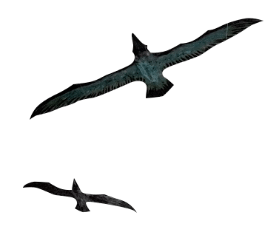Koselig: Norway’s Secret to Seasonal Joy
Studies have shown that residents of Tromsø have lower rates of wintertime depression overall than would be expected given the region’s high altitude and lack of sun. According to past research, self-reported depression during the winter in Tromsø, at a latitude of 69°N, is the same as that of Montgomery County, Maryland, 41°N. For reference, Seattle sits at 47°N (Leibowitz & Matthews, 2014).
So what makes Tromsø different? Researchers point to the region’s mindset and cultural adaptation to darkness. Kari Leibowitz, a health psychologist who spent time in Tromsø studying winter well-being, coined the term "wintertime mindset" to describe the positive attitudes locals maintain. Her findings suggest that embracing winter as a unique and enjoyable season can significantly buffer against seasonal affective symptoms (Leibowitz, 2016).
In other words: it’s not just the weather that defines winter wellness, but our relationship to it.
Instead of dreading the dark, Tromsø locals celebrate it. The city hosts winter festivals, illuminates its streets with twinkling lights, and fills its calendar with cultural events designed to bring people together. Winter in Tromsø is not a period of waiting, but of living. Locals snowshoe and ski under the moonlight, gather in candlelit cafes, and watch the aurora borealis dance across the sky.
Embracing koselig might not change the forecast, but it can change our experience of it. Lighting candles, preparing warm meals, making time for friends, and bundling up for walks in the rain are all ways to shift from endurance to enjoyment.
Seattleites might not face a true Polar Night, but there’s no doubt that the Northwest shares in the struggle against darkness. According to historical climate data from the National Weather Service, Seattle experiences an average of just 70 sunny days per year and over 150 days of measurable precipitation (NOAA, 2020). That persistent cloud cover contributes to seasonal affective disorder (SAD), which affects an estimated 5% of Americans and up to 10% in northern states (APA, 2021).
What Tromsø teaches us is that we have more control than we think. By shifting perspective and leaning into seasonal rituals, even the darkest season can be transformed.
A New Way to Winter
Want to adopt a more Tromsø-style winter mindset? Here are a few practical tips:
- Reframe Your Thoughts: Instead of viewing winter as something to survive, try to see it as an opportunity for rest, reflection, and creativity.
- Create Cozy Spaces: Surround yourself with soft lighting, warm textiles, and comforting scents to build an inviting home environment.
- Get Outside: Even on gloomy days, outdoor time boosts mood and resets your circadian rhythm. Consider investing in good rain gear or snow-friendly equipment.
- Stay Social: Plan regular gatherings with friends or family, even small ones. Shared meals and game nights go a long way.
- Honor Rituals: Celebrate the small things—light a candle each morning, drink tea by the window, or keep a journal of winter moments.
Embracing winter like the people of Tromsø doesn’t mean pretending the season is perfect. It means choosing to find joy, meaning, and beauty in its depths. And perhaps, with a little intention, even the darkest days can hold a warm glow.


